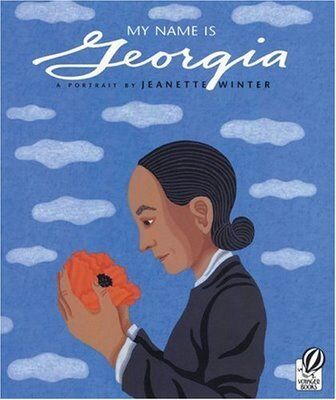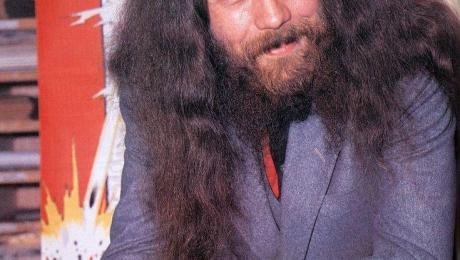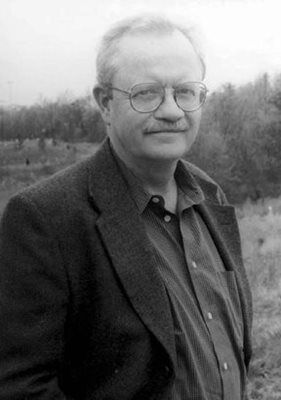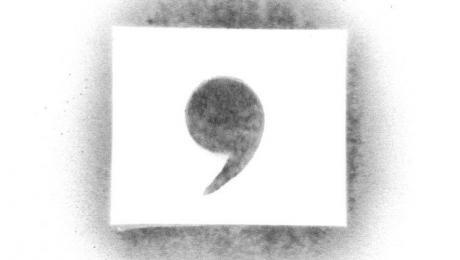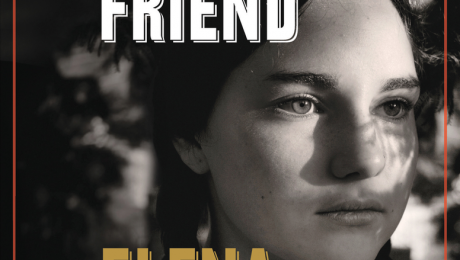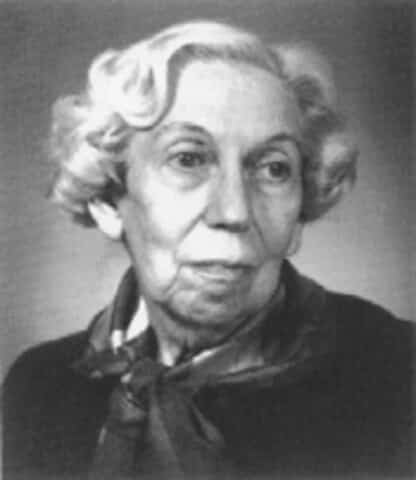Why Rust Belt Writers Should Consider Writing for Belt Magazine and Belt Publishing
The term “rust belt” evokes an image of decay, but Belt Magazine and Belt Publishing want to show that there is much more to the region than the negative, oversimplified term used for the areas that have lost their former manufacturing strength or presence. The so-called Rust Belt includes successful areas like the Minneapolis-St. Paul region, as well as struggling cities in Ohio and in the Northeast.
Belt Magazine is an affiliate of Belt Publishing, which was founded in 2013 to provide a publication venue for writing about the Rust Belt and the Midwest for a regional and national audience. Both publications value quality and complex writing.
Belt Magazine aims to resuscitate long-form magazine journalism with essays and commentary articles by writers, poets, journalists and other professionals. Belt Publishing’s anthologies allow writers the opportunity to write about specific places that offer readers an opportunity to find stories, poetry, and perspectives that resonate with them.
As Belt Publishing states on its website about itself and its sister publication: “We believe in quality over quantity and community over analytics.” So far, most of the published material is about the Midwest.
About Belt Magazine and Belt Publishing
Anne Trubek, formerly Associate Professor of English at Oberlin College, is the founder of Belt Publishing and the weekly Belt Magazine, an online publication. Martha Bayne, the senior editor of Belt Publishing, is a Chicago-based freelance writer.
For more information about the book publisher and magazine read Chicago Tribune reporter Christopher Borrelli’s article, “’Rust Belt,” and City Lab’s article by Alastair Boone, “Stories from the Rust Belt, for the Rust Belt.”
No Shortage of Midwestern Talent
The Midwest boasts a wealth of talent, with some of the best Master of Fine Arts programs in the country at the University of Iowa, University of Michigan, and the University of Wisconsin These two publications welcome regional voices and provide the students and graduate of these programs with an opportunity to share their talent and specific Midwest experience with their readers.
Writers from the Rust Belt
Many of our well-known classic and current writers have Midwestern roots, and their prose used the Midwestern landscape as the background of their writings. Midwestern writers are as diverse as Sherwood Anderson, Charles Baxter, Saul Bellow, Willa Cather, Theodore Dreiser, Jack Driscoll, Stuart Dybek, Jaimy Gordon, Lisa Lenzo, Lorrie Moore, Joyce Carol Oates, Marilynne Robinson, George Saunders, and Richard Wright.
Writers from the Midwest should take advantage of Belt Magazine and Belt Publishing to showcase their craft and reveal their presence to a regional and national audience. Writers published by either or both outlets will reach beyond the niche of literary magazines, because these two publication sources have a more diverse audience than literary magazines.
- Published in Writing & Editing Resources
What 2018 Means for SEO and Content Writing
What 2018 Means for SEO and Content Writing
Writing for Search Engine Optimization (SEO) has a history as long as search engines themselves. Like everything, the defining points of SEO have changed as the internet and business needs have grown. It now has different criteria that allow some websites to be set apart more than others by ranking higher in search engine hits.
History vs Today
In the late 90s and early 2000s, keyword stuffing was an effective way to boost a website to the top. Today, the same is considered keyword spamming and will actually get a site ranked lower, if not removed from search results. When search engines were newer, they also weren’t great at sorting out the differences between keyword phrases like “beach rentals,” “rent beaches,” and “beach renting.” In other words, similar keywords that mean the same thing. Smarter search engines now ignore such duplication.
Along the lines of keyword spamming, this also happened within everything from tags, domain names, and subdomain names. (Think: “beachy-beach-rentals.com/beachrentals.”) Ridiculous looking, but it worked. Cloaking was another previously successful concept that meant showing one set of content to searchers and another set to search engines. Today, thankfully, names like these have mostly died out.
New SEO Standards Emerge for 2018
In 2018, the idea of “queries over quantity” takes center stage. The major search engines, including Google and Bing, grew infinitely smarter over the past 10 years. Their focus is now on actually resolving the user’s query rather than simply matching and displaying keyword-based results. SEO writers need to come up with ways to address this. It means eliminating keyword spam and placing the most powerful keywords for the topic in the first paragraph of the page and in H1 and H2 headers.
Another vital ingredient SEO writers should pay attention to is user engagement. Google specifically can track not only the search results people click on but also how long they stay on the page without hitting the back button and going into another result. Users who click on one result and interact further with that page indicate their query was solved. Google wants these pages to be first at bat because longer engagements mean more revenue for everyone involved.
Remember, while websites are created for users, the mechanics of writing and designing for search rankings often take away from the user’s experience. Focus on topics and let Google do the work for the website, but make the content relevant. Searching sites like Quora and Reddit, or paying attention to Google auto-suggest and “related searches” will keep content writers up to date on what users are looking for and help tailor the website to the searches.
- Published in Writing & Editing Resources
Jeanette Winter Writes True Stories about Foreign Countries and Difficult Subjects to Educate Young Readers
Many stories by award-winning author and illustrator, Jeanette Winter are about real-life people and events. She excels in writing about domestic and foreign subjects. Some stories like “Josefina” about Josefina Aguilar, the Mexican folk artist, introduce children to achievers in different cultures. Other books, like her biography of architect Zaha Hadid, “The World Is Not a Rectangle,” inspire children with the life story of an inspiring person.
Jeanette Winter’s stories about historic people and historic events provide young readers with information that helps them learn about history (national and foreign), become better in person, and more understanding of motivations of others. This is why she also tackles tough subjects. Parents can use her children’s books to discuss difficult subjects with their children.
Follow the Drinking Gourd—Book about Slavery
Follow the Drinking Gourd, introduces children to slavery with a story about how a folk song gave directions to slaves seeking freedom. The drinking gourd was a hollowed out gourd used as a water dipping tool.
The folksong, published in 1928 was used according to popular lore by an Underground Railroad operative who added coded instructions within it. These directions enabled fleeing slaves to head north by following the Pole Star, Polaris. The story introduces children to the importance of the Drinking Gourd song which later played a role in the Civil Rights, folk revival movements, and elementary school education.
The Librarian of Basra and Biblioburro – Books about Volunteer Public Service
“The Librarian of Basra” is the story of a woman who saved books during the Iraq War. She and her friends saved the book collection, some of which contained books that were centuries old.
“Biblioburro A True Story from Colombia,” tells the real life story of Luis Soriano who encourages reading by children in rural Colombia, with his for legged bookmobile.
A New Home and Affection for a Motherless Baby Hippo
“Mama: A True Story in Which a Baby Hippo Loses His Mama during a Tsunami, but Finds a New Home and a New Mama” shows children that losing a mother does not mean the end of having a loving mother. It also lets them know that a disaster, in this case a tsunami, can sweep victims away and cause devastating personal loss.
Jeanette Winters, opens the world for her readers, by showcasing contemporary people and activities, or by taking them back in time in un such books as “Klara’s New World,” about 19th century Swedish settlers in America, “Elsina’s Clouds” about a young South African girl who paints clouds, “Angelina’s Island” about a Jamaican immigrant in Manhattan. Short biographies about notable people reflect the general intent of the author to educate young readers.
- Published in Writing & Editing Resources
Easy Ebook Formatting
Unless authors are paying for specific services through their ebook publisher, including editing, formatting, and file conversion, they will need to take steps to ensure their book reaches readers in a clean, readable format. Bearing in mind that ePub is the most common format used with the Kindle and other reading devices and applications, these steps will save authors the headache of finding functional errors in their finished product.
Things to Avoid
Avoid letting typos through! It should go without saying, but book ratings dip when there are grammatical and spelling errors present. Remember once an ebook is converted to ePub format, corrections cannot be made. Also, remember e-reader devices have a limited number of font choices. Avoid using fancy fonts which may not translate into the finished ebook. Instead, Times New Roman and Courier are two of the better choices. If the reader wants, they can then change the font based on what their device allows.
Tabs and additional spaces are a major problem when converting material to ePub. Authors need to go through the entire document to ensure it is “clean” before sending to the e-publisher. These steps will make it easy:
- Enable “formatting marks” or “non-printing characters” in the word processor.
- Physically remove ALL tabs, double spaces, and extra paragraph breaks.
- Use the “Indent First Line” feature under the Format menu for indented paragraphs.
- Use a page break at the end of each chapter instead of multiple carriage returns.
If the book includes images, they should be resized to a maximum of 300 pixels high if they will be included with the text. If the images will be full-page, they should be resized to a maximum of 1,000 pixels in height by 700 pixels in width. Remember the accepted formats are .JPG, .PNG, and .TIF. Also, never wrap text around an image. Keep the image set in-line with text by right-clicking the photo in the document and confirming its lineup.
Remember also to never refer to page numbers in the document, as page numbers will be different on every device and every app. Instead, create a Table of Contents (TOC) at the beginning of the document and link each reference to its corresponding page by using the menus, “Insert / Reference / Index and Tables,” then “Insert Table of Contents.” Mark the text to be included (for example, Header 1 styles), and attach each reference to each TOC entry. Easy-to-follow guides for doing this are readily available on YouTube.
One last tip is to use Times New Roman if the text will include any special characters or symbols. This font is the easiest to convert for ePub, whereas if other fonts are used, they may come across as simply a blank box. Better yet, avoid using special characters if possible.
By following these simple tips, writers will ensure their ebook is a high-quality item for their readers. They will also save money over hiring formatting companies whose charges generally start around $50 for what involves only a few minutes of work.
- Published in Writing & Editing Resources
Putting Grief into Words
Grief involves a broad range of emotions that can be difficult to sort out. Putting them on paper not only helps sort out those feelings, but also helps a writer connect with their audience in a real, raw way that other writing cannot accomplish. There are several ways to approach writing about grief, and each writer who is going through something profound in their life will know what works best for their situation and the way they need to process their feelings.
Pure Non-Fiction
The most straightforward way to approach grief in writing is to get the facts and feelings down in neat, chronological order. The grieving writer may begin by writing down the events leading up to what happened, followed by the pinnacle of the occurrence. This will be the hardest part of such writing as it will likely cause the original feelings to surface. Once through the bare bones of the story, the writing can take a turn into exploring all the feelings the event prompted: disbelief, anger, and sadness.
This type of structure will help the writer experiencing the grief look at each emotion from the point of view of its source. This can be fleshed out further by describing the physical effects these feelings had on the sufferer (headaches, sleeplessness, weight loss) and on those family and friends who were there to deal with the fallout.
Creative Non-Fiction
Softening the story can help the writer connect with a wider audience without losing the depth of the story. One way to do this is to spend more words painting pictures of the people involved, turning them into characters rather than simply “subjects.” Creative non-fiction makes a true story more readable as it focuses not only on the event that happened but on the lives of the people affected. Here, the writer will also take care to convey a well-described setting for each portion of their story.
Truth-Based Fiction
When turning true stories into fiction, it is vital to consult with the people involved to determine how much discretion they want when their place in the story is written. Names, times, and places will have to be changed, and some may have to be omitted. This also gives the writer the freedom to craft other emotional scenarios which, in many cases, can help them approach their own grief in a different, healthier way. This can be the catalyst to moving forward in real life.
By turning a life-changing event into a fictional story, a grief-stricken writer can detach themselves slightly from the feelings that cause them the most pain and focus on telling a story to which many people can relate. Most of us have lost someone close to us, whether through death, divorce, or other life events.
No matter which way works best for the individual writer, writing through grief becomes an effective part of the healing process. As a writer explores their feelings through each portion of their story, the writing process itself will help them explore and accept what they are going through and will provide a starting point for their next steps in healing.
- Published in Writing & Editing Resources
Why Alan Moore Became a Trend-Setting Graphic Novelist
British writer Alan Moore is one of the most prolific and critically acclaimed writers of the graphic novel genre. His groundbreaking novels include the super hero series, “Watchmen,” and historical horror story, “From Hell.”
Meant for a Mature Audience
Alan Moore’s stories are usually set in a dystopian environment and can contain political critiques. “Watchmen” comprised a series of 12 books that earned a place on Time magazine’s list of 100 greatest novels. He is the source for the Guy Fawkes mask that has become a protest symbol and was worn by his character in the “V for Vendetta” book series. This series, originally published in 1982, depicted a masked vigilante crusading against a fascist British government and a complicit British media.
In “Watchmen,” Moore used super heroes (a comic industry staple) and presented them as being less heroic and more fallible with human-like traits. His 1980s books inspired the comic book industry to target adults, as his creations revealed that there was money to be made from adult consumers.
Horror and Moore
Moore has masterfully used horror-master H.P. Lovecraft’s use of a creeping sense of dread in his own distinctive style. He mischievously uses horror to make readers face taboos in this genre, so his contributions are even more unsettling.
His horror book series, “Providence,” is praised as a masterpiece and as the “Watchmen” of the horror genre. This series also contains references to Lovecraft’s life and work.
Not Afraid of Taboos
Moore’s use of the graphic novel medium forces readers to face what makes them uncomfortable, including taboos. From his initial foray in the horror genre with the “Swamp Thing,” Moore has revealed that he ignores taboos.
He artfully uses myths, legends, and mysteries to create stories that are mature, complex, and dark. The “Neonomicon” contains an inhuman character among a human cast of characters. “From Hell” uses the mystery surrounding the identity of the serial killer Jack the Ripper.
The Fourth Dimension and Moore
Moore has also been praised for using the cubist and futurist tendencies of the medium to explore how space and time can be presented in the fourth dimension. The fourth dimension stretches the relationship between the space and time continuum and complements Moore’s talent for creating stories within stories to immerse readers in his tales.
Moore skillfully uses the fourth dimension to create multiple dimensions—fitting for someone who wants to “blur the lines between what’s real and what’s made up,” (as revealed in a Guardian newspaper article).
The graphic novel genre makes his stories more memorable because of its powerful mix of text and art. Whether his books are set in the past or the future, Moore leaves an indelible impression on readers who keep coming back for more.
- Published in Writing & Editing Resources
Kent Haruf, A Writer Whose Commitment Was Ultimately Rewarded
The Colorado-born writer Kent Haruf wrote novels of small town life with an understated flair. He was struck by the writing bug in college but spent decades in obscurity honing his craft before he became a successful published author in his forties.
Determination and Self-Belief Paid Dividends
Kent Haruf’s commitment to writing was demonstrated by his application to attend the Iowa Writers’ Workshop, as described in his article in the literary magazine Granta, “The Making of a Writer.” He did not give up after his first application was rejected by the Workshop. The second time he applied, he was so determined to be accepted that he moved his family to be near the Workshop before receiving an acceptance.
He obtained a job working as a janitor in a nearby nursing home, while he plied the Workshop with stories to add to his application. This time he was accepted by the Workshop, where his experiences made him confident that he had writing talent. That was sufficient incentive to continue writing, and the Workshop provided him with useful connections.
By the end of his fellowship, he had begun to locate his stories in Holt, Colorado. However, he worked as a teacher for more than 11 years while continuing to write. When he felt ready, he approached John Irving, a writer he had met at the Workshop. Irving recommended him to his agent, who accepted Haruf as a client.
Time-Improved Writing
Perhaps it was because of his diligence that his British publisher praised his “beautifully restrained” work, according to The Guardian newspaper. His writing style complemented the stripped-down reality he described in his interview with John Moore of the Denver Center. It takes time and skill to write restrained prose that touches readers’ hearts.
Spare Prose Complementing the Colorado Setting
Haruf’s favored location was the eastern plains of Colorado where he grew up. He spent the first 12 years of his life in three towns where his experiences left a lasting impression that is reflected in his writing and the chosen setting for his work. The culture of the region provided the background for the creations of his imagination and the spare yet rich interior lives of his characters.
The quiet beauty of his work reflected the spare beauty of this flat part of the state and the dry terrain which was tough on the economic prospects of its inhabitants. As a teacher, Kent Haruf pointed out to his students the importance of hard work in refining natural talent; he was living proof of that message.
- Published in Writing & Editing Resources
The Case for the Long-Contended Serial Comma
Few times in the history of the written word has such a small character caused so much contention as the serial comma. Also known as the Oxford comma (after the dictionary by the same name) and the Harvard comma (after the school, of course), this punctuation mark divides more than words. It has the uncanny ability to divide authors and editors into one of two camps: for or against.
Among those who support the use of the serial comma are the Chicago Manual of Style and William Strunk Jr. and E. B. White, authors of another well-known writing style guide, “The Elements of Style.” In this guide, the author is directed to use the serial comma “in a series of three or more terms with a single conjunction.” For example, “He opened the package, reviewed the contents, then abruptly tossed it aside.” Or, “Her skirt was a conglomeration of red, orange, and blue fabric scraps.”
Avid haters of the serial comma include the Associated Press (AP) and publications such as People, Variety, and The National Enquirer. AP prescribes that the serial comma should be omitted in all cases except when doing so would cause misreading. This is in direct opposition to the Chicago Manual of Style which states serial commas should always be used, except in the same circumstance. If this isn’t confusing enough, writers for Variety must accept that the publication basically sticks to its own unwritten grammar rules.
The Comma in Court
In March of 2017, the serial comma had its day in court. Dairy delivery drivers for Oakhurst Dairy, a company in Maine, sued their employer regarding overtime pay and who was qualified to receive it. The U.S. Court of Appeals determined on March 13 that the way Maine’s employment laws were written, the law was unclear and “ambiguous,” leaving too much room for misinterpretation. The problem of clarity came down to one missing comma!
In the end, the five drivers involved won their appeal, and the court ruled they were eligible for overtime benefits. Maine does have its own style guide for legislation which instructs law-writers to omit the serial comma. This could be revisited, however, as the drivers’ overtime case continues moving forward.
Which Way to Sway?
As a writer or an editor, the best tool you have in your box is communication. Writers want their work to stand apart in clarity, and an editor or publisher may have different criteria for the piece than the writer is accustomed to. Always clarify which style the end publication prefers, and it will make both of your jobs easier. Afterward, you can celebrate a little if your side of the comma conundrum has won the battle.
- Published in Writing & Editing Resources
The Mystery of Elena Ferrante
In 2016, Claudio Gatti, an Italian journalist, conducted an investigation and proclaimed the identity of the author who chose to write under the pseudonym Elena Ferrante. Gatti unmasked his quarry in his blog article aptly titled, “Elena Ferrante: An Answer?” published in The New York Review of Books.
Gatti’s evidence appeared to be believable enough for some to accept that the identified person was the real author behind the persona of Elena Ferrante. There followed consternation and controversy about whether a writer who preferred to maintain her anonymity should be “unmasked” against her will. Gatti’s claim was not acknowledged by the identified person.
An Exciting Writer Who Prefers to Remain Private
The writer who has chosen the pen name “Elena Ferrante” as her persona became famous outside Italy with the release of her works in other languages. Her novels about friendship and the life of two women growing up in Naples are especially beloved already. However, despite the fact that the translation of her novels, “Troubling Love,” “The Days of Abandonment,” “The Lost Daughter,” and the Neapolitan Novels has catapulted her into the big leagues, the writer has stubbornly preferred her anonymity.
She remains an enigma because despite her fame, she refuses to own the work that has won her adulation. Some have even wondered whether the anonymity is because “she” is actually a “he.” One thing appears clear: the author is without an ego.
JK Rowling’s Crime Novel Written under a Pseudonym
In contrast, JK Rowling wrote a crime novel under a pseudonym that became a roaring best seller after she was identified as the author. Yet Elena Ferrante‘s work soared in popularity without her identity being known.
However, since her novels seem intensely personal; maybe it is just as well that the author remains in the shadows. Who knows what personal dramas would ensue if she came forward to own her work? But one can wonder how in an age when it is so hard to get published the writer “Elena Ferrante” was able to. Was she already known to the publisher, as Gatti appears to indicate?
Several well-known authors have written anonymously. For instance, Louisa May Alcott, Jane Austen, the Bronte sisters, Charles Dickens, and Leo Tolstoy began their careers publishing anonymously. It is likely that like them, the author writing as Elena Ferrante will also unmask herself when she is ready. As her secret has not gotten in the way of readers enjoying her work, why does it matter whether the public knows who the author is?
- Published in Writing & Editing Resources
Eudora Welty, Writer and Photographer, Shaped by Depression-Era Experiences and Her Native Mississippi
Eudora Welty inherited her love of literature from her mother and her love of photography from her father, who helped establish the first camera store in her home town of Jackson, Mississippi. Her mother, as related in the author’s memoir, even endangered her life during a house fire to save a collection of novels by Dickens.
Photographer and Writer of the Southern Experience
Before she became a published author, Welty held a one-woman show of her photographs that revealed her empathy for the kind of people that would become the subjects of her written works. During a period when African-Americans were not recognized, many of the subjects of her photography were African-Americans going about their daily lives.
Hired as a publicity agent in the 1930s for the Work Progress Administration, Welty traveled through rural Mississippi. She photographed and wrote press releases about the countryside and the condition of the people during the Depression. The creative writer saw up-close the small-town southern life that she wrote about in her stories.
The Writer Emerges in 1936
With the debut of the short story, “The Death of the Traveling Salesman,” in 1936, Welty displayed her original style of writing. A gardener and photographer, Welty captured transitory moments artfully in her writing. She wrote about a familiar world in the familiar surroundings of her family home, to which she returned after her father’s untimely death from cancer.
By 1941, Welty’s first collection of stories, “A Curtain of Green,” was published, and by 1955 she had composed most of the works upon which her reputation as one of America’s great writers rests. Writers today can learn from her observant details and sensitivity; the art of writing came naturally to Welty because of her passion for photography and her love of English language and literature.
In her prose, words describe scenes with the precision of a photographer’s eye for clarity and detail. Her gift for “verbal portraiture” as described by Danny Heitman in his article, “The Quiet Greatness of Eudora Welty,” is clearly evident to readers of any of her works.
Some critics have seen her only as a regionalist, depicting southern life of a certain period. Despite past criticism of how Welty handled racism, Harriet Pollock reveals the sensitivity with which Welty approached race and racism in her “Eudora Welty, Whiteness, and Race,” published by University of Georgia Press.
A great writer is a great teacher of how to write memorably for all who follow, and Eudora Welty is no exception. Her passion for photography informed the beauty and richness of her prose. She is a joy to read in any era.
- Published in Writing & Editing Resources



